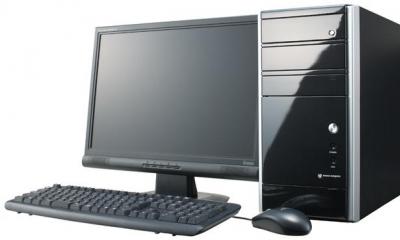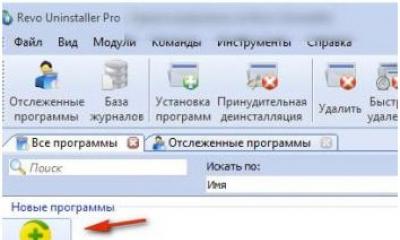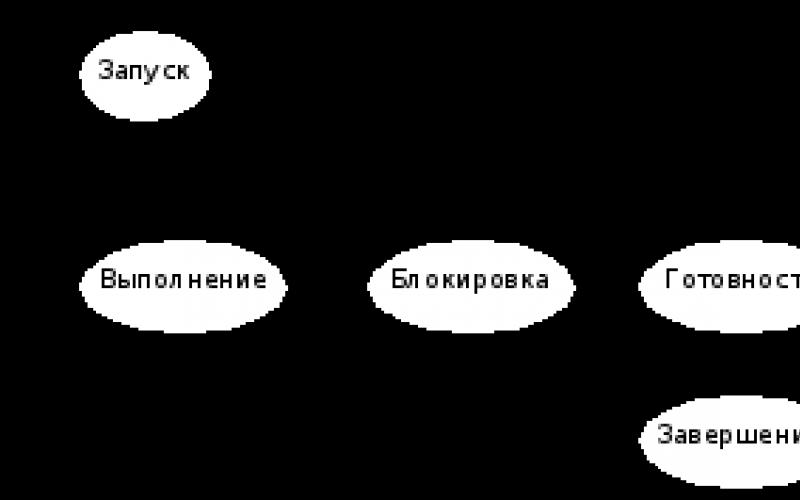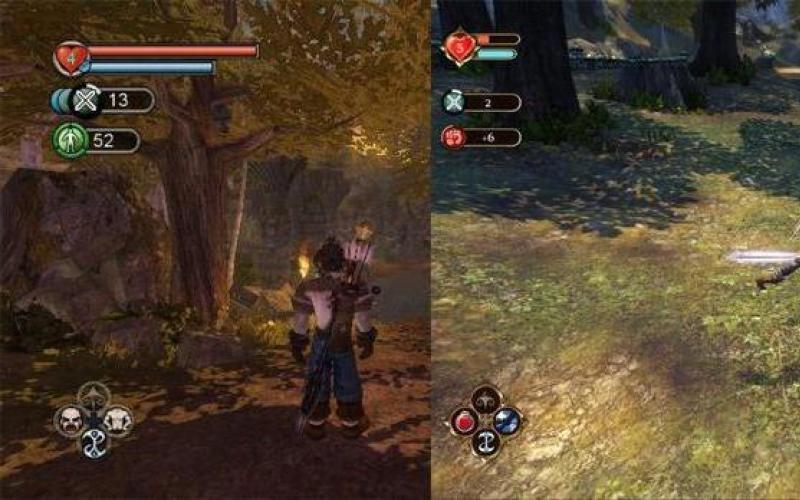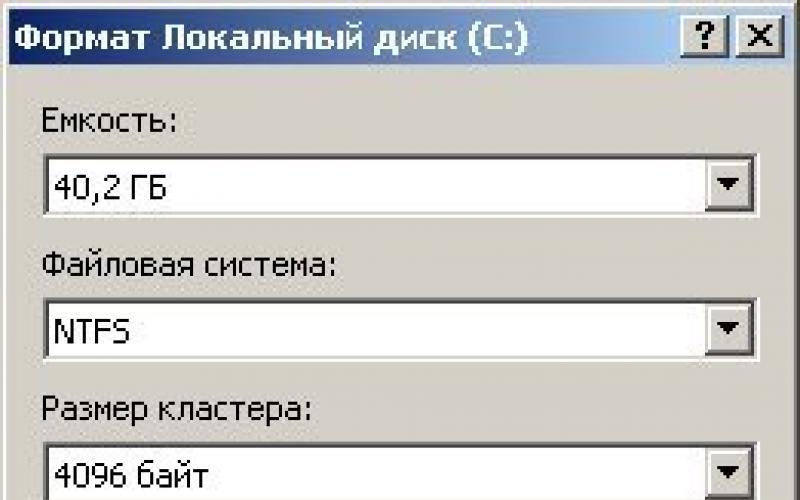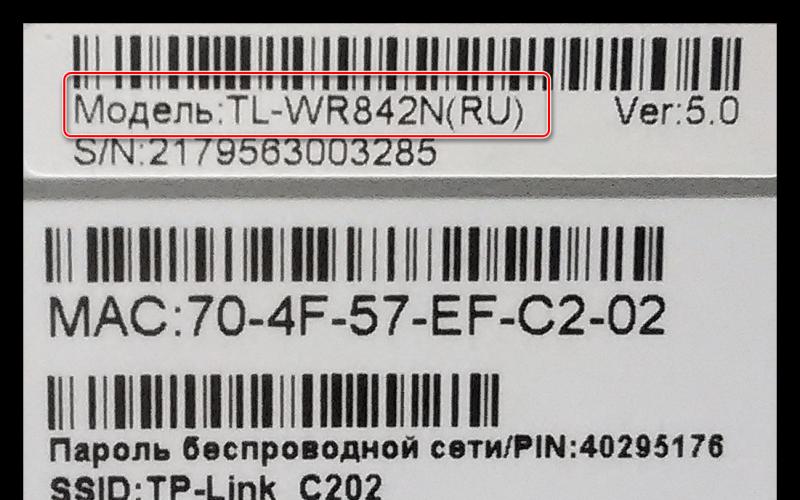An article about how to obtain permission for billing, whether it is possible to do it yourself, how to search through the billing system.
Navigation
Billing, analytical system for operator services mobile communications. The system consists of detailing outgoing and incoming calls, estimating the duration, navigating the subscriber's location, detailing sent and received messages, the cost of calls and messages.
Billing, analytical system for mobile operator services
When is billing required?
- at the request of law enforcement organizations to conduct criminal and administrative cases, to search for a criminal.
- at the request of military government agencies, to search for a person.
- at the request of private detective organizations.
- at the personal request of the subscriber under force majeure circumstances: the disappearance of an adult, child, sick person.

Billing - navigation for determining the coordinates of a person on the ground
Billing options
- decoding (details) of calls, access to the Internet
- identification code is an identifier that every phone has, regardless of the number of SIM cards.
- recording calls from a person’s mobile phone, which are transmitted as a radio signal to the nearest station antenna cellular communications, are recorded at the station in the form of information where the radio signal is coming from, and the approximate coordinates of the person calling are identified.
The operator determines the location of the phone (and possibly the missing person) when the phone is turned on. When the device is turned on, it emits radio signals even when there are no calls. Radio signals are received by the operator's cellular station in the form of the cell number where the phone was located, certain time back. The error radius is about 30 km.

Receiving radio signals from mobile devices, cell phone station
If the phone is located in an urban area, interference is created from numerous power lines and communication stations. The coverage radius will be smaller, up to two kilometers. Accordingly, it will be easier to find the location of a person (phone).
What can the operator do?
- accept or reject a request from a client to find a person (phone).
- control the movement of a person (phone) by sending special SMS messages, the receipt of which goes unnoticed by the person (subject to acceptance of the request for billing).
- introduce high-tech systems for determining positions (location, coordinates of a person (phone)).
- use the list of geographical coordinates of stations of other operators and your own. The list is tied to specific addresses and routes. Accordingly, the coordinates of a person (phone) can be calculated.
How to receive a mobile phone billing request for an individual?
Information on recording and analyzing calls is stored by the operator in strict confidence, in accordance with the law of the Russian Federation on communications. Information is issued on the basis of a request to the above organizations.

Billing is carried out at the request of official organizations
Let us stipulate that the procedure for obtaining billing for private individuals is provided only theoretically. Without a serious reason, the procedure is prohibited for private individuals.
Private detectives receiving permission to billing, most often act in violation of the law, and charge high prices for their services.

Private detectives act in violation of the law
Let's give an example: your phone was stolen, you want to make a request for billing by phone number. In this case, you want to know where, how many, and for what time there were calls from your number.
Perhaps the stolen phone already contains someone else's SIM card. We remind you that billing carried out using an identifier code.
So, your actions:
- we write a request to law enforcement authorities, so that the authorities make the following request to the operator servicing your number.
- if you have a platform phone Android, supporting the online store program Market, you can install any program yourself, for example for tracking, remotely. However, this is only if the phone can connect to the Internet. If the thief managed to remove the program Market, go to the standard settings from the manufacturer, nothing will work. In this case, again, you will have to contact official organizations.
What information and where can an ordinary person get it?
Billing– the system, in addition to detailed analysis of calls, includes payment for communication services. Therefore, you can contact the operator servicing your number with a request for a printout of calls for a certain period.

Mobile operator technical support
Before this, you should call the customer service center to find out whether the service is provided.
Is it possible and how to do billing yourself?
Although there are many programs on the Internet that suggest doing billing, these programs are scammers.
To get an answer to this question, legal organizations strongly advise you to contact the technical support of your cellular operator to clarify the cost and technical feasibility.
In practice, a request for billing private individuals are prohibited or may be provided at the request of official legal organizations.
We have covered questions about obtaining information billing— analysis, system capabilities.
Video: Concept of billing
Determining the actual location of a person is the main and most important part of the job. Previously, people tried to solve this problem with the help of clairvoyants or mediums. However, in our age, there are more realistic ways to find people, with which detective agencies do an excellent job of this task.
Technological progress greatly simplifies the procedure for determining a person’s location. Almost every person now has such a device as a mobile phone, regardless of his age and financial situation. At the same time, finding a mobile phone (and, consequently, its owner) is not particularly difficult. At the same time, it is possible to determine the actual location of a mobile phone both legally and illegally.
Location as a service from a mobile operator
Finding your location using mobile phone, in in accordance with the law, can only be carried out on the condition that the owner of this phone has given his consent to this procedure. So, you can send a request to a mobile operator to obtain information about the location of one of its subscribers. If the subscriber agrees to regularly provide information about his location to a third party, the mobile operator will provide such a service (usually for a fee).
With this service you can always find out where in at the moment the person you are interested in is located. As soon as the subscriber makes a call or sends an SMS, the signal will be sent to the nearest tower cellular communications, and From there, the information will be transmitted to the operator center. This method has two main advantages - location accuracy (up to 50m) and the ability to receive data even if the mobile phone of the desired subscriber is not equipped with a GPS system.
Finding your location using your phone software
You can obtain information about a person’s location using special software installed on his phone. After installing this software using GPS systems can receive information from satellites and track the actual location of the phone. When a request is received, the software sends you data about the location where the desired subscriber is located. In addition, you can register on the website of the company that supplies this software, thanks to which you will get access to a map, which will subsequently display the location of the person you are interested in.
Illegal methods of determining a person's location
The range of illegal ways to find a person’s location is quite wide. For example, spyware can be used for this purpose, which can also record telephone conversations. And hidden listening devices installed in a room, car or built into clothing/personal items can not only show a person’s location, but also provide complete information about everything that happens to him. However, the legislation provides for criminal liability for the installation of all the devices described above.
Since all legal methods imply the person’s consent to the transfer of location data (and it is unlikely that anyone except your children will agree to this), if you need to search for the person you are interested in, it is more advisable to contact. Specialists will sufficiently determine the location of the person you are interested in, while you will be guaranteed complete confidentiality and legality.
The word billing means preliminary calculation something or preparatory actions to complete a specific transaction for each individual buyer.
In online trading
The concept is widespread in online trading. It means buying or selling a product at a predetermined price instantly. For example, purchasing e-books, music or films. An invoice for payment is generated immediately and indicated to the buyer.
Myself process of creating an invoice for payment and is called billing. In this case, the invoice can be paid after it is generated, but as soon as this happens, the goods must be shipped immediately.
When paying for utilities and mobile communications services
Instant debiting of funds for services rendered. This is especially clearly seen in the example of mobile communications, when immediately after or during the provision of a service the cost of the service is calculated and funds are debited from the account.
Billing is not limited to the area utilities or mobile phone services. Today, billing systems are used everywhere, as it makes it possible to track customer actions, determine the most popular products and analyze sales.
This is a tool that is increasingly used by economists and managers in their work. These systems allow you to quickly, and most importantly - cheaply, obtain the information you need about customers and their preferences.
In insurance
Insurance cost calculation is also called billing. Based on information about the insurer and regulations, the cost of the policy and the amount of insurance premiums are calculated. The peculiarity of this type of system is that, regardless of how payments occur and the insurance company operates, its work uses individual payment system, that is, billing.
Types of billing
There are two types of billing – postpayment and prepayment. Postpayment is when the buyer pays at a pre-agreed price, but after receiving the product or service. For example, when purchasing books by cash on delivery or connecting telephone services under a contract. In this case, the calculation occurs after the provision of the service, at the end of the reporting period, which is usually one month or week.
Prepayment means that the product or service is paid for before its delivery. For example, purchasing Internet packages from mobile operators, upon connection of which the amount of funds for payment is debited immediately and regardless of whether the buyer uses the service or not.
It is necessary to distinguish between automated settlement systems (ASS) and information billing systems (IBS). The first are intended for money transfers and payments between buyer and seller and are of purely practical importance.
They are used mobile operators and payment systems. Although information fixed in database, but is not used or is used weakly when analyzing the activities of an enterprise and management accounting.
IBS is used precisely for collecting and analyzing information about customers and forming the enterprise’s assortment. They are installed mainly by large online stores engaged in the retail sale of goods and services.
Organization of billing at the enterprise
Simply put, billing is automated counting the cost or cost of a particular product or service for each buyer in the enterprise. The main scope of application of such a payment system is commercial enterprises that produce products or provide services. Such a system helps determine the exact cost of a particular product or service, and also ensures that this information is stored in a database.
To organize it, the enterprise uses modern means of communication, computers and programs. Without the use of computer equipment and special software billing as it exists today would be impossible. Enterprises using such a system store data about all customers and information about purchases made by these customers.
In what cases does the use of billing systems not bring positive results?
Despite all the advantages that such systems provide, their use in some cases does not bring a positive effect, and in some cases they are even harmful. The use of billing makes sense in those areas in which cashless payment systems: transfers from bank cards or electronic wallets.
This is the only way the company will succeed automate the collection process and processing large volumes of information and maintaining personal records and analysis of individual client data.
Article about the concept of billing by phone number/
Navigation
Billing! What a sonorous, mysterious word!
What does the dry transcript of this word sound like on Wikipedia? Billing means complex measures, actions, decisions at communication enterprises, where information is collected about different types of communication services, operator prices, customer invoices, and payment invoice processing.
Billing - navigation on a mobile phone.
Essentially Billing- the system is additional program to support business services in the field of communication.
What does billing by phone number mean?
Billing by phone number, or rather billing among cellular operators, this is a series of services offered to the subscriber. The following services are provided in this area:
- searching for a person, navigation to the location of a person or object, authorization in a communication network using an unchangeable code, analysis of calls, storage of subscriber data, and so on.
How does all this happen?
Let's say we need to find a person, establish the coordinates of his location, that is, carry out billing– surgery.
A regular call is a specific group of actions. As mentioned above, any cell phone has its own code (email). When making calls, that is, authorization in the mobile network, the code works like the series number of a telephone set. The code is also used to track telephone devices (for example, stolen ones) and block them.
The code - identifier (email) remains constant, no matter how the SIM card changes. It is not difficult to figure out who used the SIM card.
There are incoming and outgoing calls and messages from each phone. Based on these actions, the operator can also find out where the person is.
How does subscriber cellular communication work?
- the subscriber turns on the phone and gets in touch
- the signal from the phone (receiver-transmitter) passes to the antenna of the mobile communication station
- the location of the person with the phone is approximately determined
- the error depends on the geological features of the area, the number of cellular stations in a certain square of the region
The probability of finding a person is 100 percent, or almost 100 percent.
No search is completed without the data provided as a result of the analysis billing. IN billing includes analysis of incoming and outgoing calls, messages, call history, duration, price.
Operators keep the subscriber’s personal data and call details completely confidential, in accordance with the law on telecommunications and communications, the protection of personal data of users.
Data billing– systems can be provided to law enforcement agencies upon investigation of crimes, by court decision.
The subscriber himself is prohibited from engaging in billing without permission from the relevant authorities.
Billing, a very effective, powerful, but expensive search tool.
Video: How to find a person by phone number?
1. Technical capabilities of identifying the location of a mobile cellular subscriber.
The presence of a mobile cell phone, which can be considered a radio beacon, often allows one to determine both the current location of its owner and trace his previous movements in space.
If a subscriber uses cellular communication services (makes or receives calls, sends SMS messages, uses WAP, GPRS), information about his actions is saved as a file in the memory of the billing server. IN this file contains the following information: subscriber's SIM card number, time and duration of the call, base station (BS) number, base station sector number (if there are sectors).
If the subscriber moved during the connection and his service was transferred from one BS to another, the file may contain a list of several BS numbers. The accuracy of determining the subscriber's location in this case depends on a number of factors: the topography of the area (forest, hills, buildings, etc.), the presence of interference and reflections from buildings, the position of base stations, the number of phones currently operating in a given cell. The size of the cell in which the subscriber is located is also of great importance, so the accuracy of determining his position in the city is much higher than in rural areas.
In a city, a base station can have up to three sectors, in which case it is possible to determine in which direction the signal was. In the case of circular radiation from the base station, it is not possible to accurately determine the direction of the signal (typical for rural areas). The accuracy of this determination depends on the size of the base station coverage area: in the best case, the error can be up to 150 meters (picocell), in the worst - up to 30 kilometers (for example cellular network GSM standard, in other networks the parameters for determining the location of the subscriber may differ).
Analysis of data in the subscriber's communication sessions with various base stations (through which and to which base station the call was transmitted, date of the call, etc.) allows you to restore all the subscriber's movements in the past. Such data is automatically registered in the billing servers of companies providing cellular communication services, since payment for services is based on the duration of use of the system.
This method of restoring a picture of a subscriber’s movements is widely used by law enforcement agencies during investigations, since it makes it possible to restore, down to the minute, where the suspect was, who he met (if the second person also used cell phone), how long the encounter took place, or whether the suspect was near the scene of the crime when it occurred.
In practice, the signal parameters at the receiving location always depend on many factors. So, for example, in dense urban areas, multi-beam reception always takes place, in which both the handset and the base station can receive both a direct radio signal and one reflected from the walls of houses and other objects (a person can be close to one base station , but is served by the reflected signal of another, more distant one). In this regard, the amplitude of the signals, their angle of arrival and the value of the base-tube distance can continuously change within very large limits, and determining the actual coordinates becomes almost impossible. In rural areas, telephone signal reception is usually carried out by one station with a circular direction, which eliminates the possibility of determining the direction and makes data on the subscriber’s distance very inaccurate (with an error of up to 30 km).
Thus, the method of identifying a subscriber’s location based on data from a cellular communication system does not guarantee an accurate determination of the subscriber’s location, because the correctness of the data obtained depends on a significant number of factors. Nevertheless, this method can be a significant help in carrying out operational search activities and investigative actions, especially when investigating crimes committed by a group of persons.
Technical capabilities for using transcripts of telephone numbers, SIM cards, IP telephony, the Internet, etc. when investigating criminal cases.
In particular, there is a legal basis for the use of automated information system technical means to support operational-search activities" (AIS SORM). This AIS is used during operational-search activities carried out through electronic communication channels, and also provides control and recording of negotiations.
“Considering the possibilities of using SORM in the investigation of serious and especially serious crimes, it should be noted that this system automatic mode provides the ability to record and control information transmitted and received by any user (subscriber) in the process of providing any telecommunication services, including the Internet. In other words, with the help of SORM, any informative emissions, transmissions or receptions of signs, voice signals, written text, images, sounds or messages of any kind can be monitored and recorded via radio, wired, optical and other electromagnetic systems (Article 2 of the Federal Law " About communication"). At the same time, SORM allows you not only to record information about messages and subscribers who sent and received them, but also to control - to filter out the necessary conversations (messages) according to various technical and lexical parameters (phone number, IP address, IMEI identifier of a cellular radiotelephone, call sign , keywords, phrases, etc.) specified in the investigator’s resolution. For these purposes, various specifications of SORM hardware and software systems are used, adapted to the corresponding types of telecommunications (technological systems, communication channels and means, message formats and standards).
From a technical point of view, SORM includes: a set of hardware and software located on the node(s) of the documentary telecommunications network, including the Internet; a complex of hardware and software located at a remote control point; data transmission channel(s), providing (e) communication between the first two complexes in a secure mode.
In other words, SORM consists of 2 sets of special software and hardware devices, one of which is installed at the operator (provider) of telecommunication services (Internet), and the other - on the central SORM control panel located at a remote facility - a single central control point.”
GSM
In 1982, the European Conference of Postal and Telecommunications Administrations organized a group called GSM to develop common technical specifications for the first digital mobile network. The implementation of the standard began in 1991. Voice transmission in this network is carried out in digital form. The frequency of transmission and reception in the mobile and base stations can change 217 times per second. The GSM standard achieves a high degree of security for message transmission by encrypting messages using a public key algorithm.
Functionally, the GSM network consists of a mobile switching center, which switches the mobile network with the fixed network or metropolitan network, as well as between mobile subscribers. In addition, the center generates data on conversations and sends them to the billing center, which manages the procedures for registering the subscriber's location and base stations. The movement register and position register store information about the location of the mobile subscriber. These registers contain the international IMEI number, which is used to identify the mobile station.
The authentication center houses equipment that verifies the identity of the subscriber. The Equipment Identification Register contains three lists: white (authorized mobile stations), black (phones stolen or subscribers denied service) and gray list (subscribers having equipment problems).
Authentication equipment is rarely used in Russia.
Base station
The area covered by the GSM network is divided into cells, each of which is served by a base transceiver station. A base station typically has from 2 to 6 transmitters, which have antennas with a radiation pattern (AP) of 120 degrees and uniformly cover the area. In sparsely populated areas, 900 MHz stations are used, with a coverage area of 400 to 35 km. In densely populated areas, 1800 MHz stations can be additionally installed, having a coverage area from 200 m to 1.5 km. This is due to the propagation of radio waves, the number of subscribers and other technical reasons.
Determining the location (positioning) of the subscriber
Positioning of moving objects is carried out by transmitting special sequences of signals to the network.
It is technically possible to determine the subscriber's current position and the subscriber's movement in the past. The current situation can be revealed in two ways. The first of these is the method of triangulation (direction finding) from three points. The second method is through the computer of the communications company, which constantly records where a particular subscriber is at a given time, even if he is not talking (using identifying service signals automatically transmitted by the phone to the base station). The accuracy of determining the subscriber's location in this case depends on a number of factors: rough terrain, the presence of interference and reflections from buildings, the position of base stations, the number of phones currently operating in a given cell. The size of the cell in which the subscriber is located is also of great importance, so the accuracy of determining his location in the city is much higher than in rural areas.
Analysis of data on a subscriber's communication sessions with various base stations makes it possible to restore all the subscriber's movements in the past. Such data is automatically registered in the companies' computers, since payment for their services is based on long-term use of the communication system. Depending on the type of telecom operator, such information is stored from 60 days to 7 years.
An example is the criminal case charging Chernov and Kuharkin, employees of the Internal Affairs Directorate for the Arkhangelsk Region, with extortion and receipt of a large-scale bribe. During the investigation, it was established that they received the first part of the bribe from the applicant six months before they were detained while receiving the second part of the required amount. During the investigation, Kuharkin put forward an alibi that he could not participate in receiving the first part of the money, since in the period from February 27 to March 10, 2007, he was on a business trip in the Arkhangelsk region, which was confirmed by travel documents. The investigation, by order of the court, obtained statistics of connections on Kuharkin’s phone during this period, indicating base stations. When analyzing statistics, it was established that Kuharkin was indeed in the Vinogradovsky district of the Arkhangelsk region until March 6, 2007, as evidenced by the base stations with which the phone contacted. On March 6, 2007, the movement of a subscriber along the M-8 highway from the village of Dvinskoy Bereznik to Arkhangelsk was established, as well as subsequent calls to the subscriber from the territory of Arkhangelsk from March 6 to March 11, 2007. In addition, by analyzing the statistics of Kukharkin’s connections during the specified period, witnesses were identified who confirmed the fact of Kukharkin’s passage to Arkhangelsk with a stop and repair of the car in the village of Brin-Navolok, and also a resident of Arkhangelsk was identified, with whom Kukharkin spent the night on the night of 6 as of March 7, 2007. The accused's alibi was refuted.
Let's consider technologies for determining the location of a subscriber in relation to the GSM standard.
Positioning by Cell Id
This is the simplest technology for determining the approximate position of a subscriber using a cell identifier (Cell Identifi), based on the fact that at the time of localization or conversation, the mobile station communicates with the network and exchanges service information.
Positioning by arrival time
This technology is based on analyzing the measurement of the time period during which a signal from a mobile station reaches at least three base stations equipped with location determination units. At the same time special computer collects the received information and calculates the subscriber’s location using the triangulation (direction finding) method.
This method gives high performance, but due to the high cost and increased network load, it is not widely used.
Positioning using GPS system
The technology is based on the use of the GPS satellite positioning system and provides accuracy in determining the location of the subscriber up to 10 meters in open areas and up to tens of meters in a room with windows. The accuracy of the determination decreases if the equipment “does not see” four satellites. To use this technology, a mobile receiver must be equipped with a GPS receiver.
Positioning using time difference
The technology is much like time-of-arrival positioning. The mobile station plays a more active role, measuring the signal travel time to it from one base station equipped with a special unit, and compares it with the corresponding signal travel time from at least two more stations. The distance between the base blocks is known and the travel time of signals from each of them is known. From the mobile phone, information is transferred to the network to a special computer, which performs the appropriate calculations.
SIM card
SIM is a standard subscriber authentication module. SIM is a chip in which an international identification number - IMSI, its own individual authentication key - K and an authentication algorithm are stitched. The SIM card has memory for a notebook, designed for 100 or more subscribers. To ensure security functions, the SIM card is assigned certain codes. Using the information stored in the SIM card, as a result of mutual data exchange between the mobile station and the network, a full authentication cycle is carried out and the subscriber's access to the network is allowed. The verification procedure is implemented as follows: the network transmits the number to the mobile station, the response is calculated in the SIM card, which is transmitted to the network and compared with the correct solution generated in a special module of the switching subsystem - the authentication center.
2.1. Collection of information about the circumstances of the crime committed
a) witnesses and eyewitnesses of the crime are identified who could have seen persons using mobile communications on the eve of the commission of the crime, as well as before or after the commission of the crime. During the survey, attention is paid to the following details: what kind of negotiations were carried out (incoming or outgoing connections), the number of connections, and also at what time these connections were made;
b) the scene of the incident is linked to objects and roads adjacent to the scene of the incident, and a detailed diagram is drawn up, oriented by geographic coordinates;
c) in rural areas or in areas remote from large populated areas, it is determined which of the cellular operators has the most stable signal reception network in this territory.
When committing a crime involving the kidnapping of a person (with a subsequent demand for ransom), as well as in cases where it is impossible to establish the exact location of the crime, it is advisable to carry out such an operational-search activity as monitoring technical communication channels (hereinafter referred to as CTCC) in relation to the subscriber who made telephone connections, indicating the time of interest. Moreover, if the mobile phone was used by an unidentified person, then the requested period of time is calculated from the moment of concluding the contract for the provision of GSM mobile communication services up to 180 days; if the mobile phone belongs to the victim, then the requested period of time is calculated from the moment the first ransom demand is presented to 180 days. Carrying out monitoring of technical communication channels as an operational-investigative activity complies with the legislation in force in the Russian Federation on operational-investigative activities (see paragraph 9 and paragraph 11 of Article 6 of the Federal Law “On Operational-Investigative Activities” dated August 12, 1995 No. 144 -FZ).
When carrying out this activity, along with information about connections, it is also necessary to obtain information about the identification number of the mobile radiotelephone - IMEI and the numbers of base stations of cellular operators at which the subscribers of interest were registered. This need is due to questions that may arise in subsequent investigative actions and operational investigative activities:
1/ using the IMEI number, you can determine the model of the radiotelephone used, which subsequently, when the defendants are detained and their existing radiotelephones are seized, can be used for proof purposes in the investigation of a criminal case:
In this case, the value 1 ( serial number) when registering a switched-on radiotelephone and replacing the SIM card remains unchanged, since it is strictly individual for each mobile radiotelephone, and values 2 and 3 are stored in the memory of the SIM card, they are also strictly individual for the subscriber and change with each replacement of the SIM card;
2/ often persons of operational interest, in order to prevent intelligence officers from listening to conversations, use several SIM cards. If the IMEI is known, the use of different SIM cards by the defendants will not be a significant obstacle when conducting wiretapping of telephone conversations of accomplices in the crime;
3/ information about the numbers of base stations at which the mobile radiotelephone was registered helps to establish the location of the person involved, the route of his movement, as well as the vehicle used.
2.2. Analysis of received information in order to establish the ownership of radiotelephones, the persons using them, as well as their connections
The information obtained during the operational-search activities of the KTKS is large in volume and requires painstaking work to isolate from the entire mass of records only those that are of operational interest.
When carrying out such activities, it is necessary to reduce the requested time of connections to a minimum.
To establish the ownership of radiotelephones, it is advisable to carry out measures to verify their owners according to all available operational records of the ATC, using the forces and means of operational services, to carry out operational measures at the place of residence of the persons involved, as well as operational and technical measures for the identified means of communication.
Several people often take part in the commission of such particularly serious crimes as murders, and they can actively use mobile communications.
To ensure that the information obtained about the defendants’ conversations on mobile phones is used in the investigation process, when conducting searches at their place of residence, one should strive to detect and seize the following items: contracts for the provision of cellular communication services, SIM cards, express payment cards, empty boxes from mobile radiotelephones , radiotelephones themselves (even if they are not working properly or their components). All this can be evidence in a criminal case.
Thus, it should be taken into account that the study of billing information relating to connections of both criminal competitors and potential victims of crime, as well as negotiations of law enforcement officials, may also come to the attention of representatives of criminal groups.
Let's consider some possibilities of using billing in the detection and investigation of grave and especially grave crimes committed in complicity, but we should not forget that when collecting and analyzing information about the use of mobile cellular communications by persons involved, the main principles of work in the investigation process are: respect for rights and freedoms person and citizen, respect for the rule of law, secrecy, compliance with secrecy.
An analysis of the crimes committed shows that during their preparation and commission, accomplices actively use mobile means of communication. To identify persons involved in crimes and using high-tech mobile communications, the following recommendations may be useful:
1) obtaining billing data about subscriber connections through mobile operators, linked to the base station and indicating individual identification numbers;
2) analytically identifying cellular subscribers who may be involved in the commission of the crimes under investigation;
3) based on the results of the analysis, the orientation of operational units to carry out actions in order to detect and detain persons involved in committing crimes.
The frequency-territorial plan of the distribution network of communication facilities allows you to establish geographical coordinates and location of the base station.
The process of obtaining billing information about connections of mobile cellular subscribers indicating the BS, their processing and analysis is as follows:
1/ Based on the available information about the location of the crime, the initiator requests the number of the base station serving this territory (to draw up the appropriate resolution and obtain a court decision).
2/ Cellular operators are sent a request to provide billing information about subscriber connections for a certain period of time, linked to the base station and indicating the IMEI of subscribers.
3/ We get billing in the following form: type account, phone number of subscriber A, dialed sequence of subscriber B, date and time of the start of the connection, duration, IMEI, data from the base station of subscriber A (at the beginning of the conversation), data from the base station of subscriber A (at the end of the conversation), data from the base station of subscriber B (at at the beginning of the conversation), data from the base station of subscriber A (at the end of the conversation).
4/ Search for matches by place and time.
5/ Orienting operational units to take action against identified subscribers who may be involved in the commission of a crime.
If the statistics were obtained by the operational services within the framework of the Law “On Operational Investigation”, then there is a need to obtain these statistics within the framework of the Code of Criminal Procedure of the Russian Federation by applying to the court with petitions for permission to monitor and record telephone conversations. To do this, it is necessary to request from the employees providing operational support in the case a certificate of the results of the analysis of statistics of connections of the persons of interest. Having received a court order, you can instruct the investigative body to obtain statistics from the cellular operator. After receiving the statistics, analyze and examine them, drawing up a protocol in which it is necessary to reflect all the points of interest to the investigation.
A positive example of conducting an in-depth analysis of telephone connection statistics can be a criminal case of murder 3. with signs of an order. During the initial investigative actions, it was established that the victim had been followed for a long time, and therefore it was assumed that the criminals could use mobile phones to communicate with each other. CID officers analyzed all calls made in the coverage area of the base station, in the coverage area of which the crime scene was located. In addition, there was operational information that the crime could have been committed by residents of other regions of the country, in particular the Vologda region. A huge amount of information was processed six months before the crime was committed. In parallel with this, the statistics of the connections of V., suspected of organizing the crime, were analyzed. When comparing telephone numbers, it was established that V. connected several times with the telephone numbers of subscribers who were several times in the area of coverage of the base station sector covering the crime scene. These phones belonged to residents of Vologda. Having received statistics of connections of the specified phone numbers, the IMEI of the phones in which these SIM cards were used, as well as the numbers of other SIM cards used in these phones, were established. When receiving and studying the statistics of connections of other numbers, it was found that subscribers using SIM card data were constantly in Vologda, but periodically came to Arkhangelsk, where they stayed for 10 days, moving around the city. It was established that the subscribers were in the coverage areas of base stations covering the crime scene, as well as establishments visited by the victim. After studying the statistics, the identities of the subscribers were established. They were subsequently detained and charged with murder for hire. Connection statistics served as one of the pieces of evidence exposing those responsible for organizing and committing a particularly serious crime.
Department of Criminalistics of the Investigation Department
Investigative Committee of the Russian Federationin the Arkhangelsk region
The use of these methodological recommendations, along with the investigation, will allow the defense to prove the innocence of its client, to convict a person of perjury, which law enforcement agencies do not hesitate to involve as the only opportunity to achieve a guilty verdict.
Contacts:
7 937 1111 777 (24 hours)
Mari El, Yoshkar-Ola, st. Chekhova, 70, office 311 (Beryozka)


